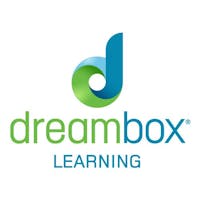When I was serving 18,000 students as the K-12 Math Curriculum Coordinator for the Parkway School District in suburban St. Louis, I wore many hats—arguably too many for any one person. One of the most difficult challenges I faced was supporting our 400 K-8 math teachers with substantive professional learning. I wasn’t alone. Just as teachers struggle to find time and resources that support differentiation and personalization for every student in math class, administrators nationwide struggle to differentiate for these students’ teachers with relevant, timely professional learning.
To ensure equitable learning outcomes for all students in mathematics, we need to figure out ways to overcome existing challenges and also ensure equitable professional learning outcomes for all mathematics teachers. To that end, I’d like to describe a new personalized, competency-based model of professional learning that can be a key part of the solution.
Far too many K-8 classroom teachers today feel less comfortable teaching mathematics concepts than they should. First-career teachers, for example, may have had only one or two math-specific courses in college (far less than their literacy coursework). Second-career and alternative certification teachers may have had even fewer opportunities to demonstrate that they understand the math they’re teaching. In addition to minimal formal preparation, many teachers may not have felt confident in mathematics when they were themselves K-20 students, and their self-image or anxiety as mathematicians can have a negative impact on student achievement.
These realities are not something teachers want or cause; rather they are realities our system allows, enables—and even encourages. Say you want to be an elementary school teacher, for example, but are worried about math. Is it great news to learn that you only have to take one college math methods course to follow your dream?
Given the shortage of pre-service preparation, the burden of professional learning in mathematics is increasingly becoming the responsibility of K-12 schools and districts. And as I learned firsthand, there simply aren’t enough resources in these districts to support all teachers as quickly as needed. Ideally, professional learning happens throughout the school year with coaching, classroom observations, and time to reflect—so that teachers can immediately apply what they’re learning to help students.
A recent publication from Learning Forward’s Laurie Calvert specifically advocates teacher agency over development focus areas, citing these five design principles for choosing the topics and skills to address in PD sessions:
- Teacher-identified learning objectives
- Based on data (including observations)
- Focused on teachers’ and students’ continuous growth
- Topics that address specific classroom challenges
- Teachers deciding what they need to learn
I found that securing release time and substitute teachers for this work during the school year was difficult because there were so many competing priorities along with an understandable hesitation to pull teachers out of the classroom. And if PD days were dedicated to mathematics—and those days weren’t removed to make up for snow days—they were “one shot” development sessions and not personalized enough to address every teacher’s specific classroom challenges.
Summer professional learning sessions were an option, when I could secure funding. We were once awarded a $1.5 million Federal Math-Science Partnership Grant; we used the funds to create an innovative Mathematicians in Residence Summer Academy where teachers worked with students and renowned experts such as Cathy Fosnot. But regardless of whether we had external grants or funds from the district, summer sessions were still optional for teachers—meaning there was no way to guarantee professional learning would impact all students.
Even when professional learning time for K-8 math teachers is in place, the development sessions are often focused more on data analysis, implementing curriculum, or learning the textbook—rather than deepening teachers’ understanding of mathematics. Consider the scenario where the focus of data-driven professional learning is simply showing teachers how to look at a data report and click a link to download, print, and deliver a scripted lesson plan. It’s analogous to how adults might have been taught to divide fractions without any underlying understanding: “Yours is not to reason why. Just invert and multiply.” Research has shown that a classroom teacher’s “mathematical knowledge for teaching”—a specific type of understanding that specifically relates to how students develop mathematical ideas and conceptions—improves student achievement more than a teacher’s ability to deliver a scripted lesson.
At DreamBox, we’re developing a new model of professional learning that can potentially address all of these needs while honoring Calvert’s five principles outlined above. In this model, teachers use up-to-date student progress and proficiency insights to identify professional learning objectives that are specific to their students and classrooms. Teachers then decide what they need to learn in a self-directed, modular PD curriculum that’s available online, anytime, anywhere. This professional learning prototype was developed specifically to connect three primary components of DreamBox Learning’s K-8 math program: the student curriculum, teacher reporting, and teacher PD modules.
The figure below shows how student data reported on the teacher dashboard is used to recommend PD modules that teachers can access to more deeply understand the math concepts their students are currently learning.

Our own initial research shows a promising association between how much teachers access PD modules and how much their students progress when compared to students whose teachers didn’t use any of the DreamBox PD modules. For example, using an internal DreamBox metric called “growth points,” third grade students whose teachers accessed our PD modules on three or more occasions progressed 25.4 growth points compared to 18.7 for students whose teachers never accessed PD modules. We will soon be publishing extensive data for grades three, four, and five.
In addition to the quantitative data suggesting potential student impact, district math leaders are optimistic about how this approach could overcome many of the challenges described earlier. Specifically, these PD modules are focused on math concepts and content that are relevant to that teacher’s class and are available continually throughout the school year. District administrators also realize the value in PD that teachers can access from home in the evenings, that’s available in short modules, and that exists in a private environment where teachers can learn and grow at their own pace without fear of embarrassment in a public group setting.
The challenges to boosting student achievement are real and immediate; improving teachers’ understanding of relevant mathematics concepts in an individualized, data-driven, scalable way is an innovative strategy for supporting students. The strength of our model is that it is informed by students’ current demonstrated learning needs and authentically deepens teachers own mathematical knowledge.



